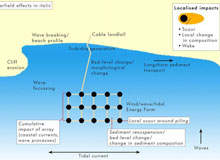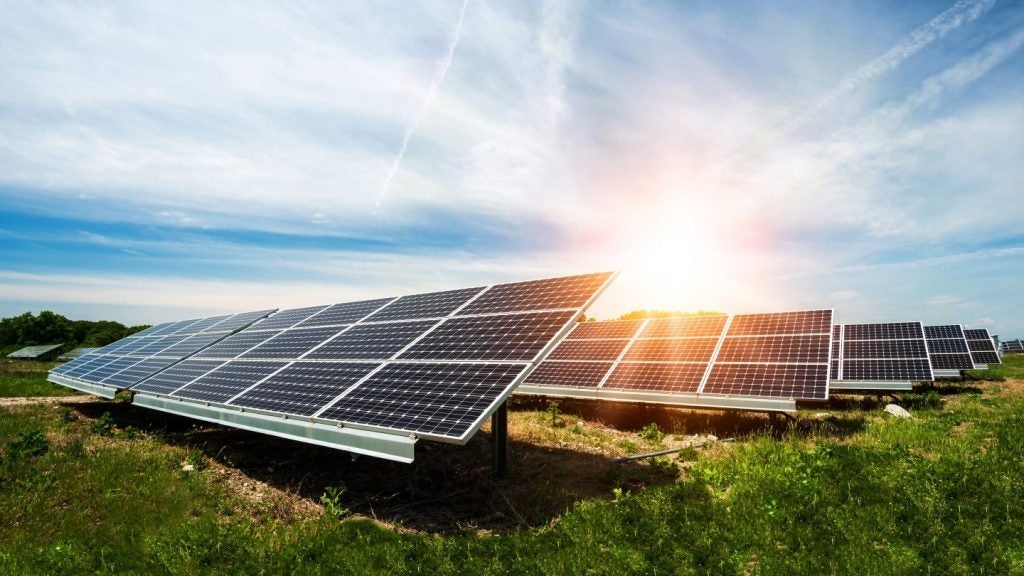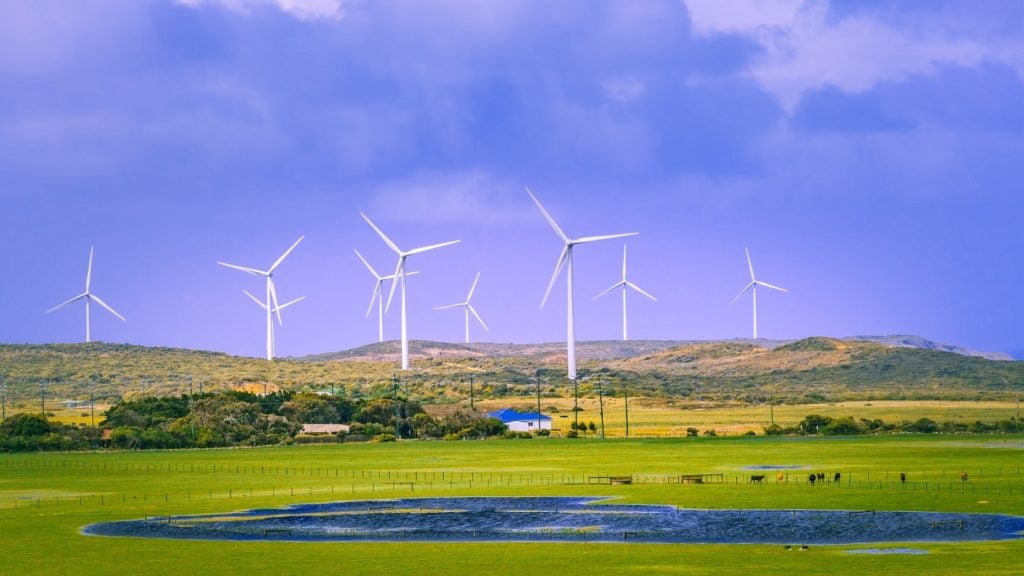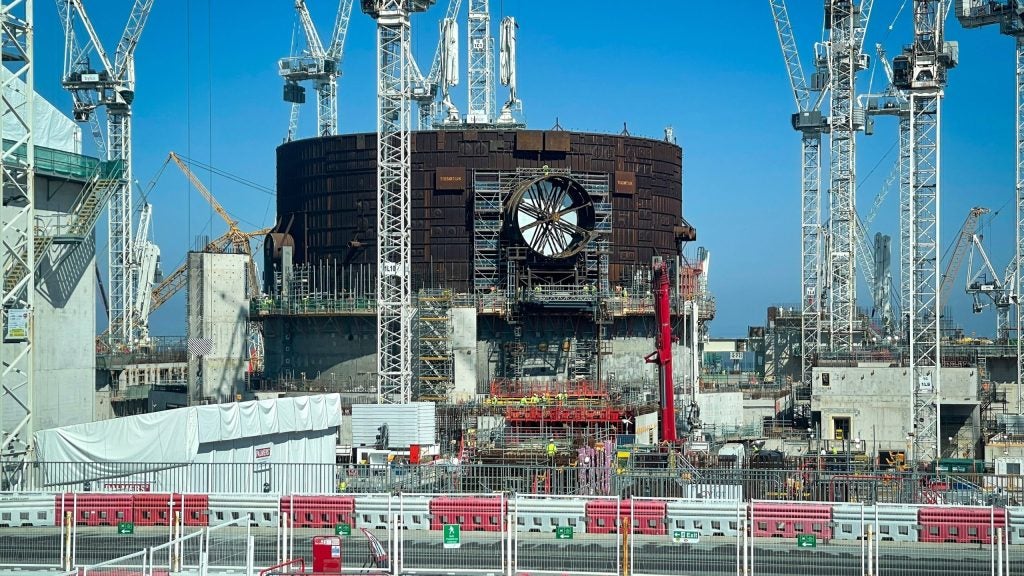
To fully harness the potential of wave and tidal power, performance depends on the technology, however, it is also strongly influenced by the layout of the array and the resulting variations of energy flows. When it is done well energy is predictable, intensity is high, extraction is efficient and the supply is constant through the year.
Good design is key to extracting the maximum energy from a given area for minimum cost. It also affects how the array moves sediments across the sea floor and can have a crucial effect on the environment. Despite these obvious effects, the true impact of good design has not been well researched, until now.
PerAWaT project
The Energy Technologies Institute (ETI) in the UK has developed a marine programme to increase marine energy to 2GW by 2020 and 30GW by 2050.
A significant part of this is the Performance Assessment of Wave and Tidal array systems (PerAWaT) project, an £8m project to improve numerical hydrodynamic modelling for large-scale wave and tidal energy arrays.
ETI’s study is being overseen by engineering company Garrad Hassan. The consortium includes EDF Energy, E.ON, Queen’s University Belfast, and the UK’s Edinburgh, Oxford and Manchester Universities.
How well do you really know your competitors?
Access the most comprehensive Company Profiles on the market, powered by GlobalData. Save hours of research. Gain competitive edge.

Thank you!
Your download email will arrive shortly
Not ready to buy yet? Download a free sample
We are confident about the unique quality of our Company Profiles. However, we want you to make the most beneficial decision for your business, so we offer a free sample that you can download by submitting the below form
By GlobalDataThe project aims to simulate a long-term operation and so find an array’s average annual energy production.
The software models will be verified and benchmarked by measurements from models and full-scale trials, which help estimate the output of a project and the return that nvestors can expect.
Limpet and Pelamis lead the way
Wave energy is being studied in several UK locations including the south-west (the forthcoming Wave Hub experimental station), Orkney (EMEC), Pembrokeshire (Wavedragon), and the Outer Hebrides. Of the devices that have been tested, two of the most promising are the Limpet oscillating water column (which formed the world’s first grid-connected commercial wave-energy plant) and the Pelamis semi-submerged articulated cylinders.
The Limpet shoreline converter built by Wavegen (a subsidiary of Voith Hydro) uses an oscillating water column that acts like a simple piston and cylinder. The converter drives a Wells turbine, a fixed pitch machine with one direction of rotation.
The Pelamis is a semi-submerged, articulated structure composed of cylindrical sections linked by hinged joints. The wave-induced motion of these joints is resisted by hydraulic rams, which pump high-pressure fluid through hydraulic motors which drive electrical generators.
Other devices are also being tested. The MK3PC from Oceanlinx uses an oscillating water column feeding a Denniss-Auld turbine. This has variable pitch blades with one direction of rotation. Ocean Power Technologies uses the rising and falling of an ocean-going PowerBuoy to drive a generator. Aquamarine’s Oyster is a buoyant, hinged flap attached to the seabed. The flap sways backwards and forwards to drive two hydraulic pistons that push high-pressure water onshore to run a conventional hydro-electric turbine.
Effects will also depend on where the arrays are deployed. Diffraction and refraction could affect 20km or more of the area around wave devices and arrays. Arrays can particularly affect deposition and erosion of soft sediments, causing downstream erosion. Coastal-mounted (breakwater) systems should bring mainly local deposition, and may also help to protect coastlines.
Potential of deepwater devices
Barrages use dams across tidal estuaries and can have high construction costs with often severe environmental effects. Existing tidal barrages include La Rance in France, the Bay of Fundy in Canada and the experimental Kislaya Guba station in Russia. A dam does not need to enclose an estuary and can instead be built (often 30km or more) out into the sea.
Alternatively, tidal stream converters are becoming more popular. They do not need dams and so have much lower initial costs and environmental effects. Recent developments have opened up more possible sites and made tidal energy more cost competitive, with the promising being deepwater (>40m) devices.
There are various designs. The TidEl from SMD Hydrovision is a self-orientating floating device anchored to the seabed and using contra-rotating dual turbines. Stingray from The Engineering Business is a hydrofoil device that is connected to the seabed by four points and which oscillates with the tide to move hydraulic cylinders.
Sea Generation’s Seagen has a tower that stretches 40m above the sea bed and two pitch-regulated, axial flow rotors. The AK-1000 from Atlantis Resources uses a horizontal axis turbine with fixed pitch blades that rotate at only six to eight revolutions per second to reduce environmental impact.
Extracting significant tidal energy from enclosed channels and straits can move any erosion up or down the coast. There will be fewer effects in energetic channels that already have dynamic sediment movements, and with rotors that are small compared with their height above the seabed and the total water depth. The number, size and geometry of moorings, piles and cable connections will affect sediments, as will their distance from the shore.
A major environmental issue for tidal installations is the far field effects on regional tides and wave formations which can move sediments to change coastal features. The major effects are the height and energy of waves and the speed and energy of tide currents. Changes in water circulation and wave patterns, particularly any turbulent wakes, will affect suspended sediments that could change seabed levels and affect beach and cliff erosion or deposition.
Stimulating energy
Sediment models have greatly improved over the last decades, however, any small errors in hydrodynamic calculations are strongly amplified, and even the most advanced models can only predict sediment transport within a factor of two.
Erosion rates are uncertain, particularly in turbulent water flows and with anything smaller than coarse sediments. It is difficult to predict flows at the boundary layers of wave currents. It is also difficult to predict the effects of tidal currents on wave devices, and waves on tidal current devices. Present models are still useful, but give qualitative rather than quantitative results.
For accurate results models need to be fully 3D, with finite volume analysis using unstructured meshes, and must predict movement in cohesive and non-cohesive sediment mixtures.
Effects will depend on the local surface and seabed conditions, which is why the research will study several different test areas.
All this is not just a theoretical exercise. Perhaps the single major obstacle to wave and tidal research has been a lack of investment. Project developers need to know how much power an installation will produce over its lifetime before they will invest, and that is what PerAWaT aims to tell them.






